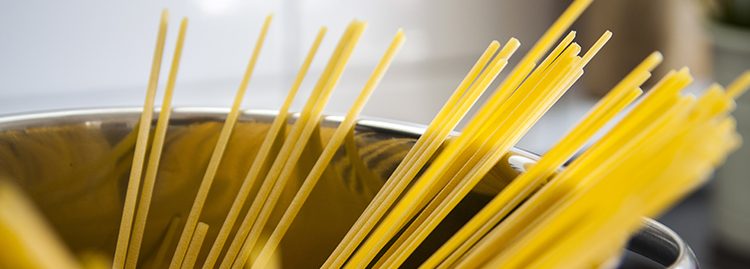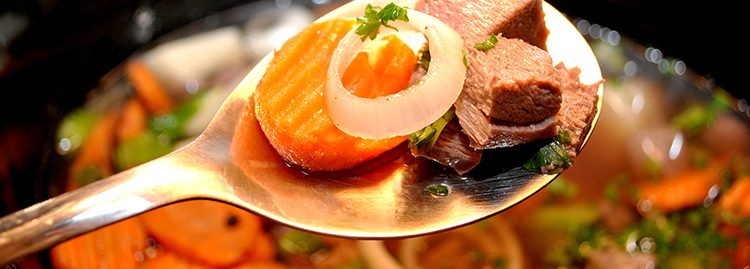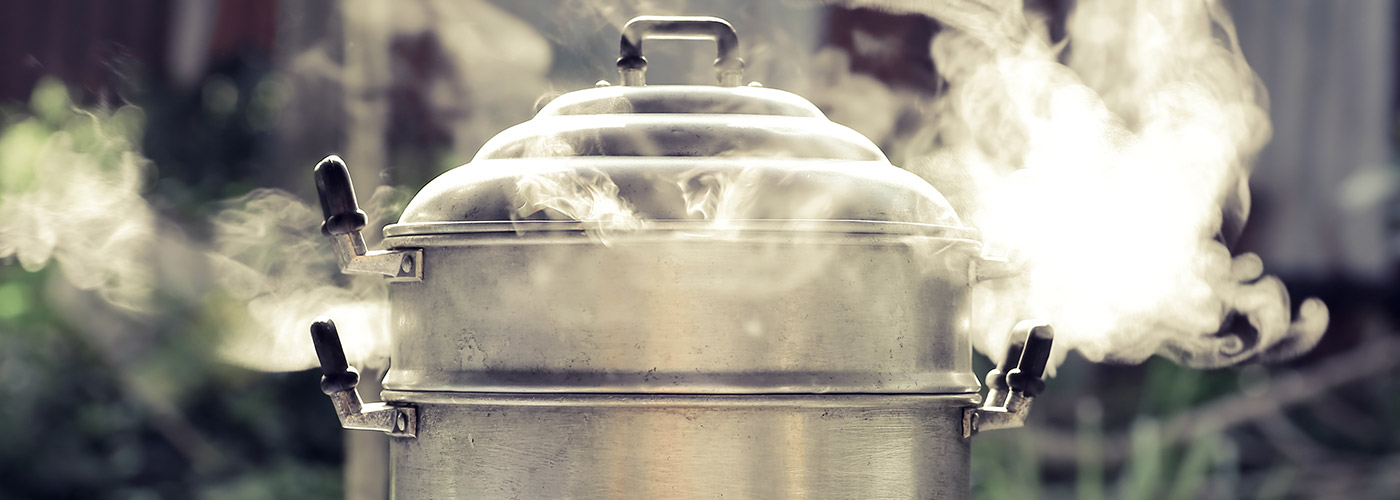Equipment Spotlight: Steam Kettle
Whether you’re overseeing a restaurant, a university kitchen, or a correctional facility’s foodservice operation, one thing is for certain: time is money.
And for fast-paced kitchens with high-volume food operations, steam kettles can be a godsend. With an exterior cooking chamber that uses superheated pressurized steam, these kettles make it easy to cook large quantities of foods without scorching.
What are steam kettles?
Steam kettles or steam jacketed kettles are self-contained versions of the large stockpot used for range top cooking. Chefs that frequently cook foods like sauces, pastas, puddings, stews, jams, jellies, soups, rice, eggs, (and even delicate foods like chocolates) – can get a lot of bang for their buck with a steam jacketed kettle.
Why choose a steam kettle?
Because steam kettles heat indirectly by blasting the exterior of the kettle cooking chamber with superheated pressurized steam, cream- and milk-based recipes and delicate foods like chocolate are not as easily scorched.

Not only that, but compared to other tools like stock pots, steam jacketed kettles use 35 percent less energy than stock pots on an open burner, and can boost a kitchen’s output in a number of ways:
- High-energy steam cooks foods faster.
- Steam kettles have a larger heat surface area than stock pots, and heat food from all sides.
- There are no hot spots.
- Provides uniform cooking with less chance of scorch.
- Shifts easily from simmer to boil with precision temperature controls.
Additionally, steam kettles can help reduce food wasted due to overcooking and burning, easily reheat meals without overcooking them, simmer foods for long periods of time without overcooking, and can simplify recipes and recipe development.
Choosing a steam jacketed kettle
Steam jacketed kettles come in two distinct varieties: a 2/3 jacket and full jacket. The type of steam kettle that will best serve you depends on the size of your operation, how often you cook, and the foods you cook most frequently.
- 2/3 jacket: Typically, kettles that tilt have a 2/3 jacket with a spout, making it easy to pour the contents of the kettle.
- Full jacket: Full steam jacketed kettles are typically limited to large stationary kettles, which do not usually have spouts.
Size
Whether you’re running a small or large-scale foodservice operation, steam kettles come in a wide variety of sizes to accommodate a full spectrum of demands. When it comes to choosing the size and volume of the ideal steam kettle for your operations, there are two things to take into consideration:
- The size of the food batches you are cooking
- How frequently you plan to use your steam kettle
If you’re cooking large amounts of food frequently, opting for a larger stationary model will provide you with the volume, speed and quality you need.
If you’re cooking smaller amounts of food (or large amounts of food less frequently), it pays to opt for a smaller countertop steam kettle and cook several batches, which will help you save money on equipment and provide a better-quality end result.

Stationary or tilting?
The primary difference between the variety of steam jacketed kettles is the way they are emptied. Though there are both stationary and tilting kettles that have large capacities, all small kettles and countertop kettles are tilting.
Tilting kettles: A tilting steam jacketed kettle can be easier to empty, especially with smaller volumes of food. With tilting models, the entire kettle body tilts forward for both the dispensing of food and liquids, as well as easier cleaning.
Stationary kettles: Stationary kettles have a sanitary draw-off valve for the draining of liquids from the kettle. These types of steam jacketed kettles are often used with very large volumes of food, as they can be easier to clean and some operators prefer the easy-to-control flow that the spout of stationary steam jacketed kettles offer.
Tip: If your kitchen regularly cooks recipes that feature chunky food products like stews that may clog the spouts, it may be more efficient to opt for tilting kettles.
Overall, there are a variety of steam kettle types that offer a number of different features to help you fine-tune your cooking operations – not to mention they can save you a lot of time and energy!
Don’t miss valuable
resources and show news



